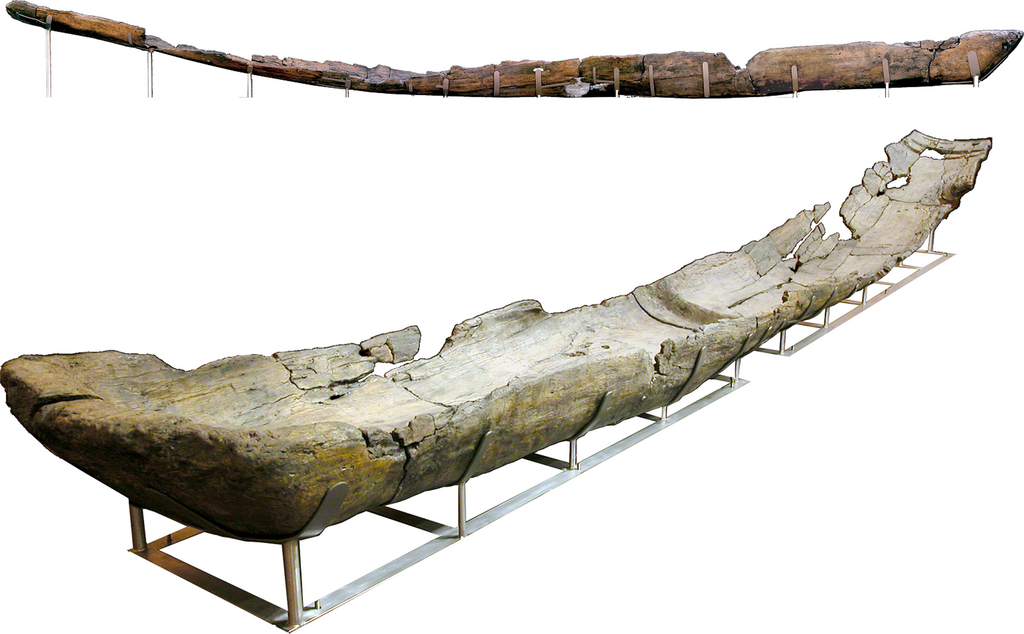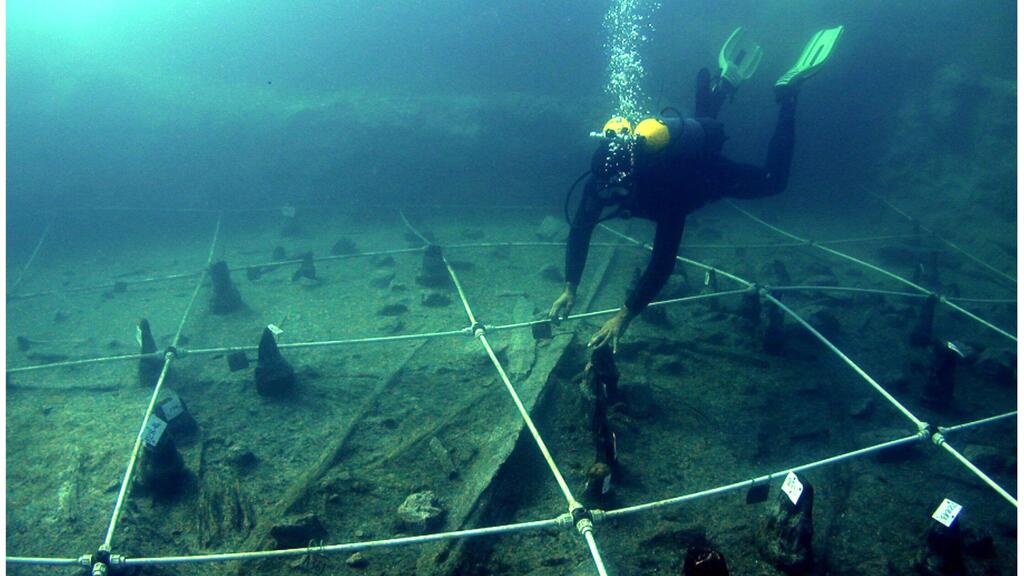Getting your Trinity Audio player ready...
Much of human history lies beneath the sea, as many submerged sites often yield findings that help deepen our understanding of ancient cultures. Many of the most significant Europan cultures originated from coastal areas, including the Phoenicians, Greeks, Romans and Carthaginians.
3 View gallery


Illustration of people building an ancient canoe
(Illustration: PLOS ONE (2022). DOI: 10.1371/journal.pone.0272833)
One of the major migratory phenomena in history took place during the Neolithic period, when agricultural communities began to spread throughout Europe and North Africa - communities that fished, hunted and traded via the sea, as evidenced by seafaring vessels found in archaeological records and the presence of ancient coastal settlements.
In a recently released study, whose findings were published in the PloS One journal, Dr. Juan Francisco Gibaja from the National Research Council of Barcelona and his colleagues provided new insights into the history of sailing technologies via the analysis of remnants of five canoe boats discovered in Italy, where the Neolithic settlement of La Marmotta was located over 7,000 years ago.
The settlement is located near Rome and was discovered as early as 1989, despite being submerged 8 meters below the waters of Lake Bracciano, connected to the Mediterranean Sea via the Arrone River.
Over the years, houses and wooden artifacts have been discovered at the site, alongside canoe boats - the shorter ones measuring 4 meters and the longer ones 11 meters - built from hollowed-out trees and dated to have been in use between 5700 and 5100 BCE, indicating La Marmotta was an important trading center considering its proximity to the Mediterranean coast.
The analysis of these canoes revealed they were constructed from four different types of wood (alder, oak, poplar, and ash) - an exceptional finding among similar archaeological sites - and that they included advanced construction techniques including lateral reinforcements, which prevented the canoes from being warped over time.
One of the five canoes had three T-shaped wooden objects attached to it, which were drilled multiple times, likely to secure sails or other maritime elements via ropes, indicating the seafaring vessels were capable of navigating open waters and thus reaching different locations by sea.
3 View gallery


Reconstruction of one of the canoes found at the lake
(Photo: Gibaja et al., PloS One, 2024)
The study’s authors described these canoes as extraordinary examples of prehistoric maritime vessels, the construction of which required a deep understanding of structural design and knowledge of the characteristics of different types of wood.
Similarities between these canoe boats and more advanced modern maritime technologies reinforce the assumption that significant progress was made in boat construction during the early Neolithic period.
The authors suggested that further excavations in the lake, considered to be one of the largest in Italy, will yield fascinating discoveries in the form of additional preserved canoes. "Direct dating of Neolithic canoes from La Marmotta reveals them to be the oldest in the Mediterranean, offering invaluable insights into Neolithic navigation,” they said.
“Our study reveals the amazing technological sophistication of early agricultural and pastoral communities, highlighting their woodworking skills and the construction of complex vessels,” they added.


